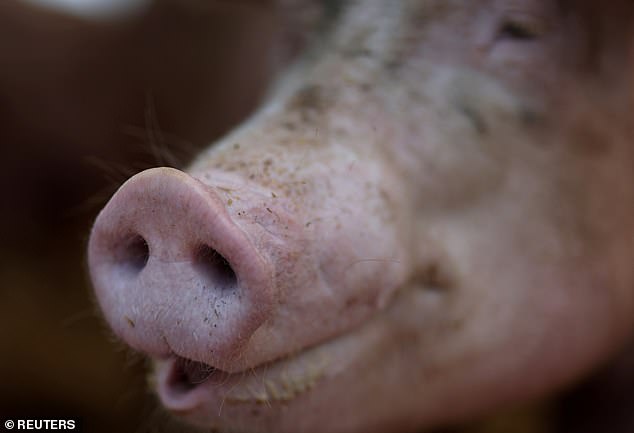A Michigan resident has tested positive for swine flu in what authorities believe is an “isolated” case.
State health officials confirmed Friday that an unnamed individual tested positive for swine flu, also called influenza A H3N2v, in late July.
The infection is usually spread through contact with pigs, although it is unclear how the individual was exposed.
The news comes after a Pennsylvania resident was diagnosed with swine flu in March following direct contact with farm animals.
People can contract swine flu through direct contact with infected pigs, and the strains that infect humans are often mixtures of avian, swine and human influenza viruses.
Influenza A is endemic among pigs, but rarely infects humans. However, in 2009, a strain of influenza A caused a swine flu epidemic that infected more than 59 million Americans and killed thousands.
However, the disease is extremely rare in the United States: it infected only three people last year.
Two of those patients had attended different agricultural fairs in Michigan and had direct exposure to pigs.
Both experienced mild illness and fully recovered with no evidence of transmitting the infection to others.
A third was a boy from Montana who had also visited a fair.
Dr. Natasha Bagdasarian, executive medical director for the Michigan Department of Health and Human Services (MDHHS), said, “While we believe this is an isolated case, Michigan residents should be on the lookout for flu-like symptoms: fever, respiratory symptoms such as cough and runny nose, and body aches.”
‘If you have these symptoms, we recommend that you get tested for both influenza and COVID-19. At-home COVID-19 testing is widely available, and both influenza and COVID-19 tests are available at many pharmacies, urgent care centers, and clinics.’
‘Regardless of the test results, stay home until you have recovered.’
The person’s health status is unknown. Cases are usually mild and disappear on their own within a few weeks, with little risk of death.
There are several strains of swine flu, including H1N2 and H1N1, which caused the 2009 epidemic.
Infections are rarely transmitted from animals to people, but the 2009 outbreak was the result of a mutation in the virus that made it capable of infecting humans and causing disease.
The H1N1 strain combined avian, swine and human influenza A viruses.
The outbreak disproportionately affected children and adolescents, who were more susceptible to contracting a disease so severe that it required hospitalization.
A World Health Organization report found that the number of infections in the United States that year reached 59 million, with 265,000 hospitalized and 12,000 dead.
People can catch swine flu through direct contact with infected pigs, and the strains that infect them are often mixtures of avian, swine and human flu viruses.
To prevent infection, the CDC recommends avoiding contact with pigs, as well as avoiding drinking and eating around them. If you have pigs, it’s also important to monitor them for signs of illness, the health organization added.
People who have direct contact with animals, such as farmers and slaughterhouse workers, are at higher risk of contracting the zoonotic disease.

